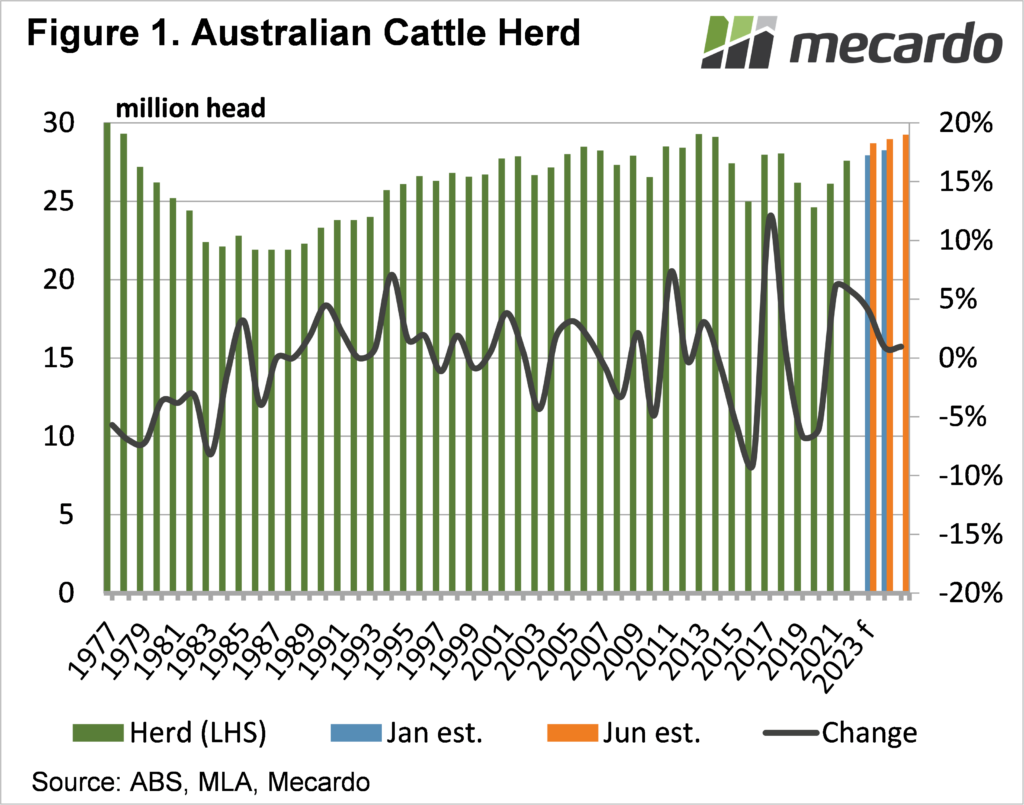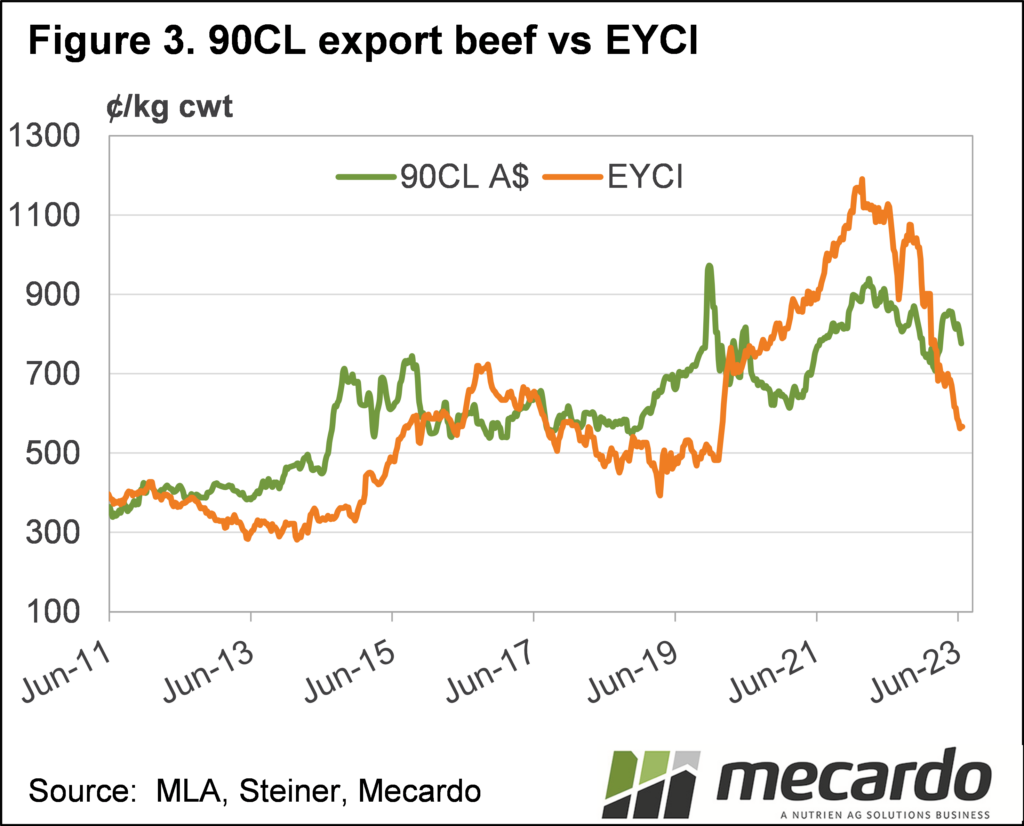The cattle herd rebuild has been quicker and stronger than expected. Meat and Livestock Australia’s (MLA) latest projections have lifted herd and slaughter estimates significantly on previous estimates. We know what stronger supply is doing to prices now, but what about in the event of the forecast dry spring?
The latest MLA cattle projections show the cattle hard-hitting a 9-year high this year. Figure 1 shows the Australian cattle herd is expected to hit 28.7 million head this year, the highest level since 2014. The latest herd forecast is 4% higher than 2022, and well up on the previous forecast.
Herd growth is expected to continue, albeit at a slower rate of just under 1% for the next two years. The herd is expected to almost hit 29 million head in 2025, which will be as large as it has been since 1978.
Slaughter estimates have also had a big lift in the latest projections. With year-to-date cattle slaughter running well ahead of last year, slaughter projections were updated to a massive 19% increase on 2022. In 2024 MLA expects cattle slaughter to lift a further 9% and another 9% in 2025 to hit 8.35 million head in 2025.
With average seasons cattle slaughter may track close to the levels forecast by MLA. With a drier-than-normal season, cattle supplies might start to cause some issues.
Back in 2018, the cattle herd was at 28.05 million head, levels 2% lower than the forecast level for this year. The climate wasn’t kind in 2018, and the start of a herd liquidation saw 7.8 million head slaughtered in 2018, followed by 8.48 million head in 2019. These numbers are 13% and 11.5% higher than MLA’s forecasts for 2023 and 2024.
The concern is that with such rapid growth in the herd, cattle producers are now highly exposed to poor seasonal conditions, and herd liquidation.
Figure 3 shows how the heavy slaughter impacted the EYCI in 2018-19. The heavy discount to the 90CL export price was caused by processor bottlenecks, with more producers wanting to sell more cattle than processors could handle.
What does it mean?
A dry spring coming on the back of rapid herd growth would be bad news for prices. Add the issues the processing sector has had in finding staff to increase kill rates, and we could be in the perfect negative price storm.
This is obviously a worst-case scenario. A reasonable year rain-wise and slow growth in slaughter capacity could see prices steady and move higher.
Have any questions or comments?
Key Points
- MLA’s latest projections have increased herd and slaughter estimates.
- Under the current herd, slaughter supplies can increase rapidly with a dry spring.
- Processing restrictions and a dry spring would be a worst-case scenario for prices.
Click on figure to expand
Click on figure to expand
Click on figure to expand
Data sources: MLA, ABS, Mecardo















